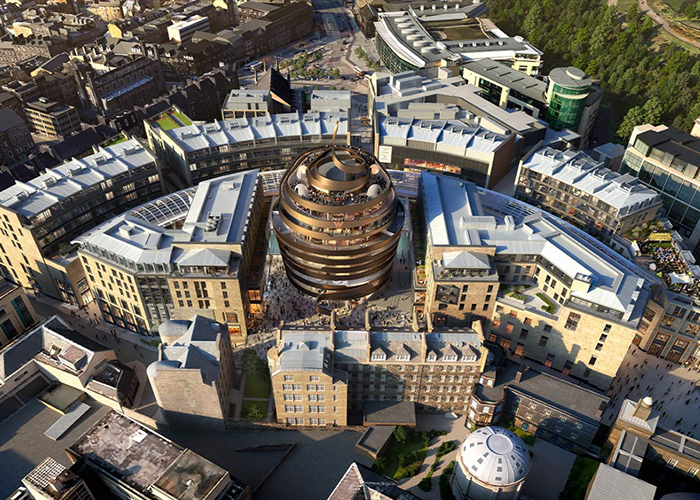LEADING independent property advisory firm, Lismore Real Estate today released its comprehensive review of the Scottish investment market for the first quarter of 2021.
The return to a countrywide lockdown at the start of the year continues to bring challenges across the entire property market and global economy. This has inevitably had an impact on quarter one transaction volumes, with more subdued trading at £175m, which is some 70% lower than the five-year average.
However, with more product being either prepped for sale or being quietly marketed, Lismore predicts a stronger quarter two.
Investor activity:
Open-ended UK funds are generally continuing their steady selling strategies, while other funds concentrate on liability matching product or the strongest sectors of logistics, living and life sciences.
Overseas investor activity has been temporarily subdued as travel restrictions have stagnated this buyer pool, but the weight of capital remains and it is likely to return by the half year.
Private equity is becoming frustrated as the volume of forced selling remains limited and the speculative funding of logistics in Scotland, backed by PE funding, cannot be far away.
Chris Thornton, Associate at Lismore, said:
The true impact of the economic shutdown over the last year has yet to be fully realised. However, the beginning of restrictions easing and the successful vaccine roll-out is starting to offer light at the end of what has been a very long tunnel.
“The impact across property sub-sectors is varied. The logistics and industrial juggernaut continues to move apace, with the £14.3m acquisition of Titan at Eurocentral being the standout deal of the quarter. Demand continues to outstrip supply and we are beginning to witness speculative logistics development across the central belt. With such strong market dynamics, those currently on-site with speculative developments are likely to be the early winners.
“Any talk of the demise of offices is hugely over-stated, with the majority of workers keen to reconnect with colleagues, with some form of blending working likely to be the norm, as restrictions begin to ease. Staff well-being is now firmly at the top of the agenda for offices and those buildings that offer (or can be adapted to offer) features to meet occupier demands will succeed and thrive. Those that can’t will come under serious pressure from occupiers and see a softening in values.
“The living sector continues to be top of many investors buying lists and we anticipate that the leisure sector will enjoy a post-COVID bounce. Those operators that have survived should see a strong return of business, although returning to significant profit levels may take longer.”
Structural change continues in the retail sector:
The pandemic has accelerated many fundamental changes, both negative and positive, in the retail sector that had been ongoing for the last five years. From “value destruction” and “re-purposing” in the shopping centre and high street sectors, compared with “resilience” and “opportunity” being the buzz words in the foodstore, convenience and best located retail warehousing sectors, structural change is happening for sure but not total decimation.
We are now seeing some lending and new players (who do not have legacy issues) entering the retail warehousing market. This is primarily focused on urban parks and food-led schemes. Terms remain conservative but it is an acknowledgment that certain physical retail is not dead and still has a future.
Shopping centre owners who are keen to sell schemes with limited alternative use options are having to accept huge value reductions with recent examples in Scotland showing anywhere between 50-75%.
Lismore research gives snapshot on the investor view on the retail sector:
Lismore undertook research during the quarter with a wide range of investors (funds, property companies, investment managers and overseas/private equity investors, in order to gain a more detailed view on investor activity in the retail sector.
The findings showed that 75% of respondents expect to either decrease or maintain their exposure to the retail sector, with a quarter seeking to increase their exposure, albeit this is predominantly through an increase in exposure to retail warehousing and food stores. Of those increasing their retail exposure, the majority are investment managers (15%), with funds being most likely to decrease retail holdings (22%) with only 1% of property companies contemplating a reduction in retail.
When asked to rank the best performing retail subsectors during 2021, not surprisingly high street and shopping centres are viewed as the weakest sub-sectors, accounting for over 95% of responses in the weakest two categories.
Standalone food stores contributed to 52% of responses within the strongest retail sub-sector, with convenience food stores accounting for the majority in category 2 (51%), followed by retail warehousing in category 3 (54%). As expected, essential retail impacted least by the effect of COVID-19 are viewed as continuing to be the strongest performers over the next 12 months.
As the market settles, the strong sentiment is that turnover rents are here to stay, with no respondents expecting turnover rents to decrease in the short to medium term. Indeed, 92% of respondents expect the prevalence of turnover rents in the retail sector to increase, which will have significant implications for both rental levels and the relevance of retail zoning in the future. There was a clear view that turnover rents would be focused on shopping centres and high streets rather than retail warehousing, where landlords are in a stronger negotiating position.
The Lismore Quarterly Review also features two in-depth interviews, one with Graham Lind from Ediston Real Estate and Martin Perry from Nuveen Real Estate, who is leading the redevelopment at the St James Quarter, jointly owned by Nuveen and APG.
Graham Lind, Director of Retail Warehousing at Ediston Real Estate said:
“The retail warehousing was proving a resilient sub-sector and even prior to the dawn of the pandemic and despite the difficulties of the last two years void rates across the sector remain relatively low at around 5%.
“Tenant failure will continue to be a concern after the pandemic recedes and rental values across the sector will be under pressure for some time to come. As capital value reductions bottom out, the resilience of rent collection and low vacancy rates will attract lenders back but I don’t think it will be until 2022.”
Martin Perry, Director of Development, Real Estate, Europe at Nuveen Real Estate added:
“The challenge over the next five years is that the cost/value relationship has been substantially altered by digital progress and the property industry needs to respond faster to this and modernise practices in all areas including governance, investment, leasing and operation. There are significant challenges ahead but with the right changes, approach and investment, good returns for all participants can still be achieved.
“There are two key measures that the Government should be urgently enacting. The first is the suspension of business rates for the entire period to allow for full recovery of physical retail, and secondly, the need to level the playing field between physical retailers and on line retailers by introducing online sales taxes and allowing the revenue generated to be put back into the upgrading of physical retail environments, such as town centres, before these options cease to become viable.





